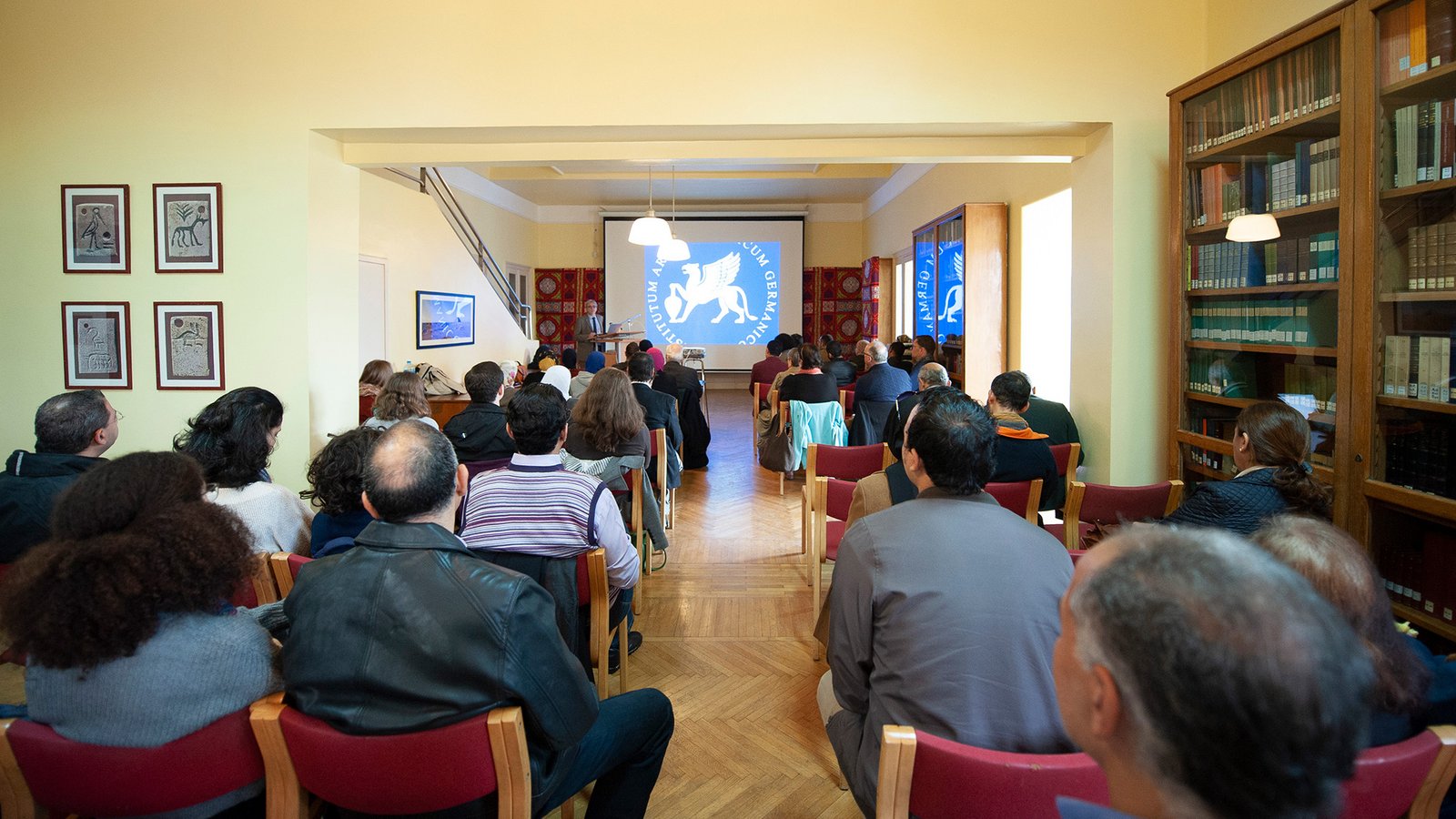About us
In 1929, the Deutsches Institut für ägyptische Altertumskunde (German Institute for Egyptian Antiquity), which was founded in 1906, was incorporated as the Cairo Department to the German Archaeological Institute. Whilst its initial contractual purpose was to provide support for German projects, institutions, and scholars working in Egypt, its mission was redefined after its integration to the DAI. Since then "[the Institute] not only sustains scholarly research of Ancient Egypt, but furthermore strives to include the study of prehistoric cultures, classical antiquity, early Christian and Byzantine art, and the vast domain of Islam in Egypt into its scope of activities" (H. Stock).
Although today the geographic focus is on the Egyptian Nile Valley, regions like the Eastern Sahara with its oases in the Libyan Desert, the desert mountains between the Nile and the Red Sea, or the Sinai Peninsula are also taken into account. A number of approaches require special attention to territories beyond Egypt's modern borders so as to also take into consideration the extensive interregional networks since the Neolithic period, as with the case of the Middle and Upper Nile (Sudan, Ethiopia, and Eritrea), the Levant and the Upper Euphrates, and North Africa (Libya) as well.
In terms of chronology, focus is made on Egypt's prehistory with its Neolithic and Chalcolithic cultures of the 5th and 4th millennia BC, the Pharaonic, Hellenistic, and Roman periods, late antiquity and the early Byzantine eras and those between the rise of Islam and the present day.
The Cairo Department is engaged with the exploration of archaeological sites which frequently had been occupied over protracted periods through different phases of Egypt's history. With regard to category, these sites include urban complexes (Elephantine, Buto, historic Cairo), monumental necropolises (Dahshur, Saqqara, Abydos, Luxor/Thebes-West), and sanctuaries (mortuary temple of Amenhotep III at Luxor), but also workshops and waystations (e.g. rock painting sites and inscriptions in the Aswan area). This variety is motivated by the interest of exploring historically and functionally complex contexts (also in their natural settings) so as to spell out the diversity of the historical and cultural veracity as well as its changeability by means of relevant examples.
The department maintains its commitment to both long-term field projectswith broadly laid-out lines of approach (Elephantine, Dahshur, and Buto) and more modest projects open for yet more innovative practices. Next to purely archaeological methods, our investigations rely on applications used in science and technology, heritage research, art historyand architecture, alongside philology, epigraphy, and papyrology.
The Cairo Department is receptive to the incentives from its host country and strives at promoting the development of archaeology in Egypt through comprehensive cooperation. Transfer of factual and methodological knowledge plays a central role in project implementation and in the training courses for the promotion of young professionals. Heritage preservation, restoration of important find objects and a sustainable preparation of sites entrusted for public access are integral part of our research projects at all time.
The Cairo Department has always considered itself as an indispensable supplement to German academic research. In particular, it assists young scholars in acquiring specialist knowledge and orientation, but furthermore promotes international collegiate contacts and intercultural competences within the framework of partly durable and responsible participation in all fields of work, which can only arise from work and life experience in Egypt.

